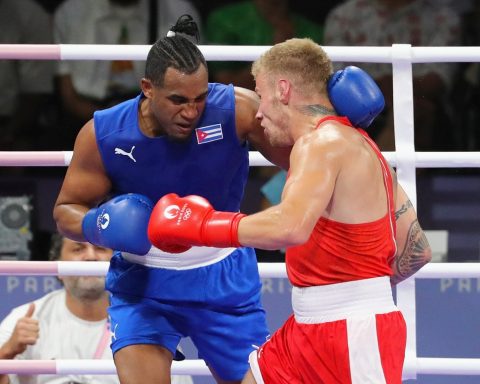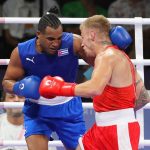The American swimming federation (USA Swimming) announced new rules for its transgender athletes, including testosterone limits, after the victories achieved in university pools by Lia Thomas, accused of competing at an advantage for being born a man.
The NCAA, the governing body for college sports, said in January it would enforce rules set by USA Swimming, which could prevent the University of Pennsylvania swimmer from participating in future competitions.
In February, an Ivy League competition is planned, which brings together the most prestigious universities, and in March the NCAA national championships.
Lia Thomas’s sporting successes with the University of Pennsylvania, where a few years earlier she had competed on the men’s team, brought up again the sensitive issue of transgender athletes and the debate between inclusion and protecting sporting equity.
The case of Thomas, 22, also has political resonance in the United States, where several conservative states recently passed laws barring young transgender women from participating in girls’ sports at school.
“We will ban men from participating in women’s competitions,” former President Donald Trump said Jan. 15 at a rally in Arizona.
peer support
In this context, USA Swimming announced that different rules will begin to be applied depending on whether it is an elite level or not.
At the elite level, the federation evokes two criteria.
On the one hand, the “proof that the athlete’s previous physical development, as a man, and although mitigated by some medical intervention, does not give the athlete a competitive advantage over their cisgender competitors (people who identify with their biological sex at birth )”.
On the other, “proof that the athlete’s testosterone concentration has been below 5 nmol/l (nanomoles per liter) continuously for a period of at least thirty-six months prior to the date of application” the federation noted.
The controversy surrounding Lia Thomas arose from her excellent results this season, her first in the women’s category.
At the beginning of December, in Akron, Ohio, he posted the best performances of the year at the collegiate level in the 200-yard (183-meter) freestyle (1:41.93 minutes) and in the 500-yard (457-meter) freestyle (4 minutes). :34.06).
The swimmer complied with NCAA rules and underwent a year of testosterone suppression treatment. But some organizations, such as the Women’s Sports Policy Task Force, have found these standards insufficient, particularly where an athlete began her transition after puberty.
Lia Thomas began her transition in May 2019 with hormone treatment, as she recounted on the “TheSwimSwam” podcast.
US media have echoed a sense of injustice felt by some of Thomas’s colleagues and rivals.
On Tuesday, however, teammates supported her in a statement, saying “the sentiments expressed by an anonymous member of our team are not representative of the sentiments, values, and opinions of the entire Penn, Pennsylvania team, comprised of 39 women with diverse origins”.
“We want to express our full support for Lia in her transition,” they stressed. “We value her as a person, teammate and friend of hers.”
In the case of athletics, the international federation (World Athletics) also imposes testosterone limits (since 2019, less than 5 nmol/L for twelve months). For this reason, the transgender athlete CeCe Telfer was excluded from the United States Olympic selection in June 2021.
Last August, at the Tokyo 2020 Games, New Zealand weightlifter Laurel Hubbard became the first transgender athlete to compete in an Olympic event.
Three months later, and after two years of consulting dozens of specialists, the International Olympic Committee (IOC) gave up setting criteria for transgender and intersex athletes to be able to compete, alleging a “lack of scientific consensus on the way in which the Testosterone affects athletic performance.
The IOC left it up to each international federation to set a “framework” for establishing its own rules.
















